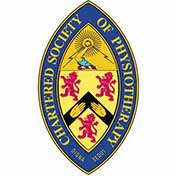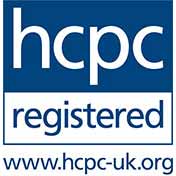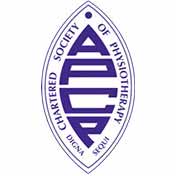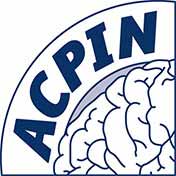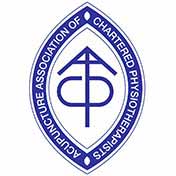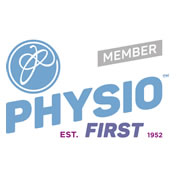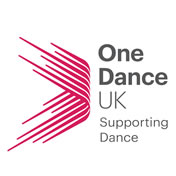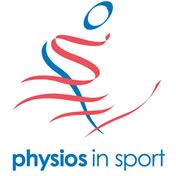Musculoskeletal Problems
Children who participate in sport are likely to be fitter, healthier, and stronger. However, playing sport, recreationally or competitively, as a child or adolescent does bring with it the potential risk of injury. Injuries can range from a simple ankle sprain, to a more complex ligament injury to a joint, to the fracture of a bone. Though children do bounce back quickly from injuries, we must bear in mind that the growing body and immature skeleton heals differently to that of an adult, and that there are certain factors that must be considered when rehabilitating a child following a musculoskeletal injury.
The musculoskeletal system includes bones and their associated joints, and any soft tissue, such as muscles, ligaments, and fascia (connective tissue).
Ligament and muscle injuries (soft tissue injuries)
Ligament sprains and muscle strains are common injuries, rarely serious, and children generally recover well. If the affected area is iced, rested, and gently moved to prevent stiffness, children tend to return relatively quickly to full activity.
Simple sprains and strains in children do not tend to require physiotherapy intervention. More significant soft tissue injuries may require a brief period of physiotherapy rehabilitation, in order for them to recover normal movement and stability of the joints involved, and to strengthen the associated muscles to allow a safe return to sport/activity. Severe ligament tears and ruptures tend to require Orthopaedic assessment, in order to establish whether or not the injury requires casting or splinting, or even surgical intervention. Physiotherapy following any procedures for these types of injury, or upon removal of a cast/splint, is vital in order to rehabilitate the limb fully and to ensure the best physical outcome for the child.
Rehabilitation of soft tissue injuries may involve exercises and stretches to restore joint ranges of movement, stability and strengthening work to promote joint control and muscle power, ‘proprioceptive’ exercises to re-educate co-ordination and balance, and a functional/sports-specific programme of exercises designed to assist full return to normal activity. ‘Hands-on’ techniques are regularly used to facilitate soft tissue and joint mobility and to reduce any scar tissue and associated muscle compensation.
Growth Plate conditions
The growth plate (physis) is an area of tissue at each end of a long bone that is undergoing development (‘growing zone’), in growing children and adolescents. It determines the length and shape of the bone once growth is complete, and it is replaced by solid bone some time during adolescence. In children, it is the weakest part of the skeleton (more so than muscles or ligaments), therefore an injury to the growth plate can significantly interfere with a child’s normal growth and development.
Injuries to the growth plate are most likely to occur as a result of a fracture to a particular long bone, especially if the fracture occurs close to or within a joint. Another possible cause is following the rupture of a significant ligament; for example, the ACL (anterior cruciate ligament), whereby surgical reconstruction of that ligament involves drilling directly into the growth plate. Children who participate in higher impact sports such as running, gymnastics, and football, may account for a proportion of these injuries, but they tend to occur at more of a competitive level of sport, and in young athletes with intense training schedules.
It is important to encourage your child to take part in activity and sport to promote health; both physically, and emotionally. In order for them to do this safely, there are certain precautions that you can take to make sure that their skeletal system is supported fully:
- Always encourage your child to warm up before playing sport.
- Ensure that they wear the appropriate clothing/guards/splints/shin pads etc., as required by the sport.
- Make sure that your child is healthy and fit enough to take part in their sport, and meet the particular demands of that sport.
- Ensure they avoid playing when very tired or if they are in pain.
- Consult your GP immediately if they complain of pain that persists and affects their ability to put normal pressure through a limb.
Sever's Disease
This condition commonly affects children aged 8 to 16 years, and is due to increased stresses being placed through the growth plate of the heel bone (calcaneus) at the point where the calcaneal tendon (Achilles' tendon) attaches. Stresses in this area of the body can be caused by repetitive jumping and landing, or running, resulting in inflammation of the growth plate at the back of the heel bone.
Pain is usually reported at the back or the side of the heel bone, though sometimes it can be felt underneath the heel itself. Symptoms are aggravated by weight-bearing and eased by rest. The reason why some children develop this problem and others don’t is largely unknown, but individuals presenting with the condition often have associated tightness in their calf muscles and ‘pronated’ (rolled in) feet. This suggests a strong biomechanical element, which can be exacerbated by participation in impact sports, such as running and dancing.
Management strategies include rest, ice, avoiding walking in bare feet, and early referral to a Podiatrist to further assess the foot and its biomechanics. Your Physiotherapist can provide a suitable stretching programme and address any contributory muscle imbalance and altered biomechanics with a comprehensive rehabilitation programme.
Osgood Schlatter’s Disease
Pain which is located below the kneecap (patella) over the bony prominence at the top of the shin bone (tibia), can be the result of a condition caused ‘Osgood Schlatter’s Disease’. This is not really a disease as such, but an inflammatory condition of the tibial growth plate, caused when repeated stresses occur at the attachment point of the powerful patellar tendon. It can be common amongst children and young adolescents who participate in certain sports that involve jumping, deep squatting, and running; particularly during periods of growth, as the growth plates are quite soft. Repeated tension through this tendon, caused by activity from the large muscle group at the front of the thigh (quadriceps), may result in inflammation, swelling, and tenderness building up in this area. It may also become painful when kneeling.
This condition has been mismanaged in the past, with medical professionals advising parents that it is simply something that their child will "grow out of", and that stopping sport is the only solution to the problem. Contrary to this belief, there are in fact actions that can be taken which can help to alleviate the existing symptoms, prevent them from recurring, and enable your child to continue participation in their sport.
Management involves ‘relative rest’ from the aggravating activities, the application of ice to the painful area, and then an assessment and rehabilitation programme advised by an experienced Physiotherapist.
Physiotherapy assessment may highlight biomechanical problems such as a weakness in the gluteal and pelvic muscles, which causes abnormal stresses to occur through the patellar tendon when it is on tension. Weak hip/pelvic muscles can cause the leg to deviate from its correct alignment during jumping and squatting activities, thus loading incorrectly through the kneecap and the patellar tendon, and causing irritation to build.
In the same way, abnormal foot positioning can cause alignment deviation within the leg and subsequently, abnormal loading through the patellar tendon. Weakness may also be found within the quadriceps muscles in particular, which means that they cannot support the knee fully when moving dynamically and/or at speed.
All of these biomechanical factors are known to contribute to the development of Osgood Schlatter’s Disease. The good news is that they can be addressed with specific exercises and appropriate advice, in line with the management of the underlying cause of the problem – the earlier the intervention, the better the result.
SUFE (Slipped Upper Femoral Epiphysis)
Slipped Upper Femoral Epiphysis (SUFE) is a condition seen in adolescents, involving the growth plates (epiphyseal plates) of the hip. With a SUFE, the growth plate is weak and the ‘ball’ of the joint (head of the femur) slips downwards and backwards. The condition is not usually associated with an injury, and although the exact cause is not known, it is thought that there may be a link with increased body weight during adolescence and hormonal changes during puberty.
Symptoms generally develop slowly, initially behaving like a pulled thigh or groin muscle. There is commonly aching at the hip and knee joints, a limp when walking, and reduced movements at the hip. SUFE requires an early assessment, as early detection results in a better outcome. Surgical intervention is usually necessary in order to stabilise the hip joint until the growth plates have closed. The unaffected side may also require treatment to prevent future slippage on that side.
Physiotherapy post-surgery is essential, in order to restore good ranges of movement at the hip joint and to rehabilitate strength, stability, walking, and a full return to normal activities.
Perthes’ Disease
This is a condition whereby the head of the femur (the ‘ball’ of the hip) softens and can actually break down due to loss of blood supply to the area. This process causes the shape of the head of the femur to change, and in some cases, to fracture. Over several months, the blood supply gradually returns and new bone is laid down (much like normal fracture remodelling, but a significantly longer process), which allows the femoral head to begin to reform.
The cause of this disease process is unknown, but it affects approximately 1 in 1000 children in the UK, usually between the ages of 4 and 8 years, and it is more prevalent in boys. Occasionally, both hips can be affected.
Early symptoms include pain around the hip and groin, which may refer down the thigh and into the knee. A limp may develop when walking, as the pain increases and stiffness of the hip joint prevents normal movement. The thigh muscles may also begin to look thinner (wasted) due to altered use of the leg, and in later stages, the leg may appear shorter.
Diagnosis is usually confirmed by X-Ray and/or MRI scan, and a referral to a Paediatric Orthopaedic Consultant will be required. Management of this disorder is aimed at ensuring that the re-growing femoral head forms a spherical shape during the healing process, which will allow it to sit well within the hip socket. An abnormally-shaped femoral head can lead to stiffness of the hip joint and early wear and tear changes in later life.
Rest, casting/bracing and/or surgical intervention may be required. Physiotherapy involvement is also very important in the management of this condition, and your Physiotherapist will help to promote good ranges of movement at the hip joint, strengthen muscles, and re-train gait patterns, whilst also advising on pain management and a timely return to full activities.
Osteochondritis Dessicans
This is a relatively rare condition, seen in young adolescents who are usually active in sport, and it gives rise to joint pain but with no history of a specific injury. Though its cause is not entirely known, it is thought that repetitive shearing of a joint, and compression forces which result in micro-trauma to the joint, instigate the problem. This is then followed by a lack of blood supply to the affected area.
As young adolescents have open growth plates (epiphyses), they are more susceptible to injury during growth spurts, therefore repetitive micro-trauma can damage the subchondral bone of a joint. The damaged bone can then become separated from the rest of the bone, resulting in a ‘loose body’. This does not always have to involve a weight-bearing joint, and this condition can be seen within the upper limb as well as the lower limb. In some cases, the loose body remains stable, close to where it broke away; therefore, with careful management and a period of rest, there may be no need for surgical intervention. However, if the loose body moves into the joint space, the joint can become very painful and swollen, and removal of the fragment may be required via an arthroscopy ('keyhole surgery'). Although this condition is thought to only affect 20 in every 100,000 people in the UK, it should be considered when assessing the cause of adolescent joint pain.
Along with pain, other symptoms may include restricted movement at the affected joint, limping (when weight-bearing joints are involved), and ‘locking’ and/or ‘catching’ of the affected joint, during movement.
Physiotherapy intervention can help pre and post-operatively, by providing appropriate advice regarding activity, and by maintaining and restoring the movement at the joint, as well as muscle flexibility and strength throughout the affected limb.
Fractures and bony injuries
 Bony injuries in children are extremely common. The bones of a child are soft and pliable, so are less prone to fracturing. Therefore, they tend to ‘bend’ rather than break.
Bony injuries in children are extremely common. The bones of a child are soft and pliable, so are less prone to fracturing. Therefore, they tend to ‘bend’ rather than break.
'Greenstick' and 'Torus' fractures are unique to children. With a Greenstick fracture, the bone breaks on just one side, much like when a young branch is bent but does not fully snap. With Torus fractures, the bone buckles under stress/trauma, but does not break.
Both types of fractures tend to heal extremely well and without complication, and are usually immobilised for a period in a cast. Greenstick fractures tend to take longer to heal than Torus fractures, as the bone usually has to be repositioned and set in cast for a longer period. Recovery of movement following these types of injury tends to be fast, although close attention is paid to ensure that there is no disruption to the growth plate (see section above).
Interestingly, fractures to the elbow joint are the most common amongst children, due to the tendency for them to fall onto their arms either when playing, or participating in sports. A fracture may occur at a number of different locations around the elbow joint, depending upon the mechanism of the injury. As a fracture involving the elbow joint commonly occurs around the growth plate, particular attention is given to the child’s progress (once the cast has been removed), concerning pain and recovery of movement and function. On occasion, a surgical procedure may be required to stabilise an elbow fracture with pins or screws. Physiotherapy intervention post-fracture is vital, in order to regain full movement and function.
Fortunately, fracture recovery in children is generally very good due to their skeletal make-up and their potential for healing. Management very much depends upon the location of the fracture, the age of the child, and any other associated injuries that also need to be treated. Physiotherapy intervention supports a speedier recovery, with a focus on regaining full and normal movement and strength, and giving appropriate advice to both the parents and the child on a return to full activity. A sound knowledge of paediatric conditions, the child’s skeletal system, and relevant healing timescales is essential, in order to provide the correct level of physiotherapy safely, and at the appropriate time.
Torticollis (acquired and congenital)
Also known as ‘wry neck’, torticollis in children and babies can be either acquired or congenital, and is characterised by a twisting/turning/tilting of the head and neck in a particular manner.
Acquired muscular torticollis is caused by the inflammation and tightening of the muscles around the neck, in response to trauma or a cranial nerve irritation. The muscles go into spasm and then prevent the normal movement and positioning of the head on the neck. This may occur after a child has slept in an awkward position, as a result of trauma to the head and/or neck, or extended periods in a car seat.
Non-muscular causes of acquired torticollis may be the result of other underlying medical problems that arise, such as upper respiratory tract infections, pharyngitis, bony abnormalities of the neck, swollen lymph glands, or more life-threatening conditions such as tumours, vertebral subluxation (partial dislocation of the spinal joints), and retropharyngeal abscesses. Should an abnormal head and neck position present alongside any other symptoms such as fever, drooling, and/or respiratory distress, your child must be taken immediately to A&E.
Congenital torticollis typically presents within the first month after birth, and becomes evident when the child prefers to hold their head in a tilted and/or rotated position; favouring one side, due to tightness in the muscles on that side of their neck. This limits their ability to turn their head normally, to respond to and interact with people and their environment, which ultimately leads to them functionally neglecting one side. It is believed to be caused by trauma to the baby’s neck muscles immediately before or during delivery, particularly with breech or forceps deliveries. It may exist as a condition alongside other medical and neurological disorders, and may also present following trauma to the clavicle ('collar bone') during delivery.
Babies with congenital torticollis may have asymmetrical facial features, or may present with one side of their head flattened (plagiocephaly). This is caused by the constant pressure on the same area of their head, as their neck is turned persistently to one side only. If this condition is left unmanaged, it may lead to delayed cognitive development, poor body awareness, negligence of one side of the body, and balance/co-ordination difficulties, with sensory perceptual disorders as the child grows and develops. Congenital torticollis may also lead to secondary physical problems such as spinal scoliosis (curvature of the spine) and unequal weight distribution through the limbs as the child becomes more mobile, which may continue to cause problems into adulthood. Congenital torticollis can also be associated with dysplasia of the hips, and therefore these joints should be routinely checked in children presenting with this condition.
Physiotherapy assessment and rehabilitation is essential for children presenting with a muscular torticollis, in order to encourage normal movement and flexibility of the neck, and to prevent further complications and deformities within the spine. Depending upon the source of the problem, physiotherapy treatment will focus on releasing the soft tissue tightness and muscular spasm using manual therapy techniques, passive stretching and positioning, with a home exercise programme for parents to follow outside of the physiotherapy treatment sessions.
Improvement may take up to 2-3 months, but generally the problem will be fully resolved within 12 months of beginning treatment; each child improving in their own individual timeframe, depending upon their response to therapy.
Parents are also advised to change their child’s position whilst they are playing; to include their tummy, on their side, sitting, and supported standing, in order to encourage movement of the head and limbs in all directions. Laying a baby on their tummy for periods whilst they are awake allows them to strengthen and stretch their muscles, and also facilitates visual development. It is thought that babies that spend too much time on their backs and not enough time on their tummy may have tighter muscles in their neck, and weaker back and stomach muscles.
Should this condition not resolve with physiotherapy input alone, a referral to a Paediatric Consultant may be necessary, and if the spine has begun to alter its normal curve, an Orthopaedic examination may be required.
Anterior Knee Pain (AKP)
This term relates to any pain coming from the front of the knee. It is usually aggravated by exercise, and is a common presentation amongst older children and adolescents. It can be caused by a number of factors, not necessarily as a result of a direct injury to the knee. It may be labelled by health professionals as "growing pains", which can unfortunately lead to the symptoms being dismissed as simply being "part of a child’s growth", when in actual fact, the problem can be managed well and symptoms effectively alleviated.
Biomechanical causes
The main cause of anterior knee pain (AKP), including that labelled as "growing pain", is biomechanical. This term relates to the structural alignment and movement of the body; therefore, ‘normal’ biomechanics rely on soft tissue length and tension, muscle strength, and joint stability, all working in harmony with one another. Any muscle imbalance, tight or lax soft tissue, and any resultant joint instability, can alter limb alignment and therefore change the way in which a person moves.
As a child is growing, the tissues develop at different rates to one another. For example, bones may grow at a rate that is faster than that of the supporting muscles. Therefore, during periods of rapid growth, anterior knee pain may occur as the soft tissues (quadriceps muscles) develop and stretch at a slower rate relative to the bone growth (of the femur), which causes abnormal stresses at the knee joint (patellofemoral joint). This pain may then be exacerbated by increased levels of activity, such as going up and down stairs, and participating in sport.
Other biomechanical causes of anterior knee pain may include malalignment of the feet, weakness within the gluteal muscles (hip and pelvis), and abnormal soft tissue tension around the kneecap (patellofemoral joint). For example, an altered foot posture can change the normal walking pattern, and therefore cause compensation to occur further up the limb, often at the knee joint. Children with abnormal structure of the feet (‘flat feet’, ‘in-toeing’, and ‘club foot’), are therefore prone to developing anterior knee pain, due to the compensatory altered biomechanics at the knee joint.
For children with these types of problems, co-management by a Physiotherapist and a Podiatrist/Orthotist is essential. This may include specific exercises to strengthen and stretch the lower limbs, custom-made insoles, or perhaps splinting, in order to promote normal foot positioning throughout periods of growth, and even into early adulthood.
Abnormal biomechanics and limb alignment must not be ignored in children, however subtle the presentation. Early intervention and appropriate management of the growing child is vital, if symptoms are to be addressed and future problems avoided.
Instability of the patellofemoral joint
Instability of the patellofemoral joint (kneecap joint) is another common cause of anterior knee pain. This may occur as a result of abnormal biomechanics (described above), or from congenital structural abnormalities around the kneecap, such as ligament laxity.
Laxity of the soft tissues around this joint can result in the patella ‘maltracking’, ‘subluxing’ (partially dislocating), or in extreme cases, fully dislocating. This problem is commonly seen in individuals who are ‘hypermobile’; a condition which affects much of the population and refers to a global ligament laxity throughout the body. Joints can become unstable due to reduced ligament tension around the joint, and physiotherapy is usually required to address strength and stability issues, to improve the support mechanisms of the joints, to reduce any symptoms, and to help prevent joint dislocation.
A Physiotherapist specialising in paediatric conditions, can assess your child to determine the cause of their anterior knee pain. As illustrated above, there are many potential causes of this problem; therefore, a thorough assessment is necessary. Once the source of the problem has been established, the appropriate management plan can then be formulated, and the correct advice issued. Anterior knee pain is not something that should be ignored or dismissed as something that your child will “grow out of”. There are specific issues that can be easily addressed, which can help to manage the problem. Early intervention and management will in turn prevent future problems from developing with the knee joint.
At Yorkshire Children’s Physiotherapy, we specialise in the assessment and rehabilitation of all manner of musculoskeletal conditions and sport-related injuries. Our Specialist Paediatric Physiotherapy team sees children across the spectrum, from those who have sustained a simple ankle sprain, to those children recovering from multiple injuries, to complex orthopaedic surgery and limb reconstruction surgeries and their long term rehabilitation. We are happy to assess and treat your child at home or at their school, or we can provide physiotherapy rehabilitation from one of our clinic locations.



